
Ripon native recalls how mom went from State Street to Head Quacker on television.
In hindsight, Jeanne Bice may have been destined to be one of Ripon’s biggest hometown celebrities and home-shopping network QVC’s most beloved personalities.
“It just seemed obvious,” said Tim Bice, 1978 Ripon High School alumnus. “Historically, if you just go back and look at all these elements that occurred through our lives, it all was leading up to getting her to there.”
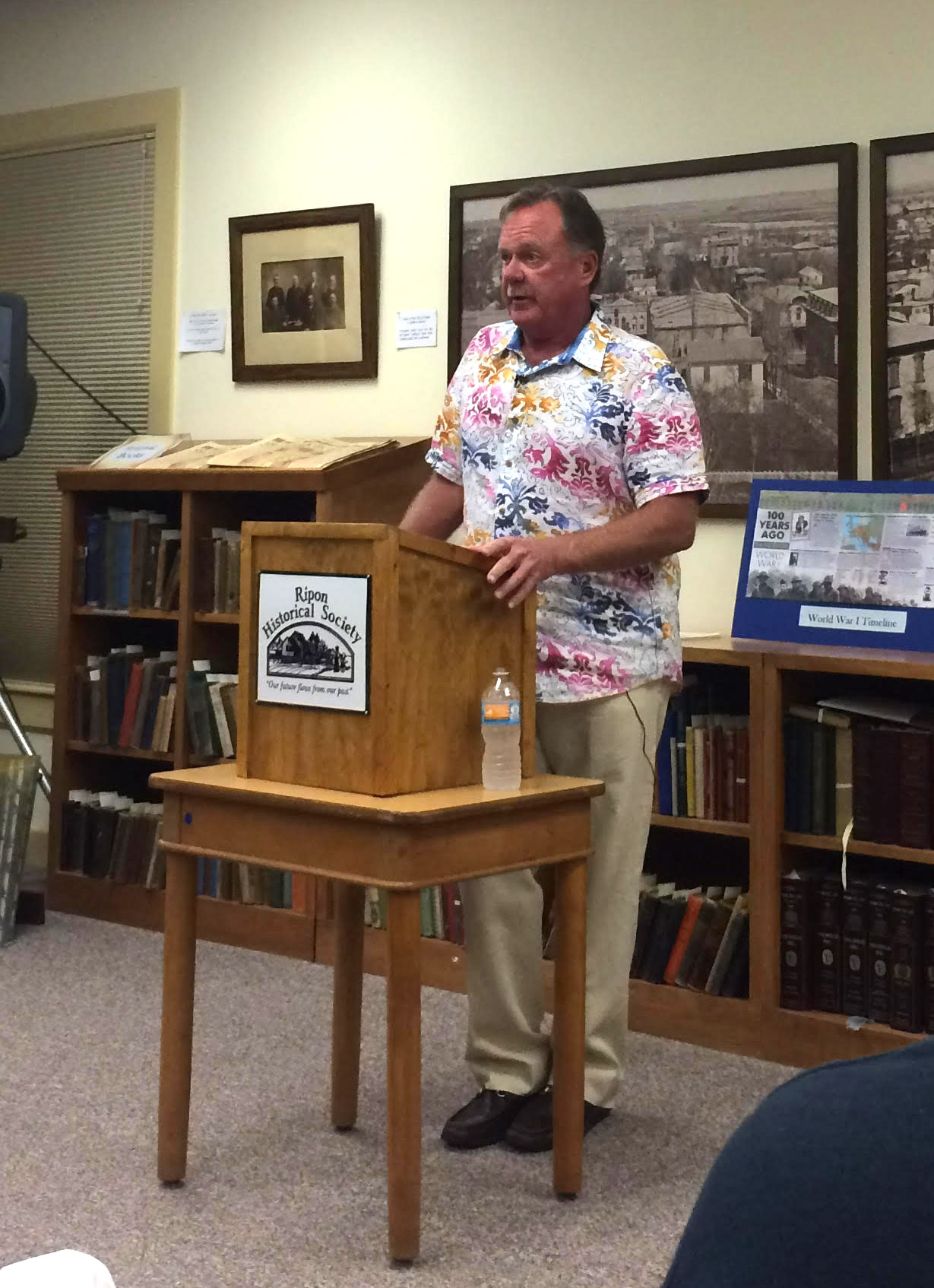
Now a part-time Green Lake resident, Tim spoke for almost 90 minutes to a full house at the Ripon Historical Society last week Thursday about his family’s time in Ripon and how his mom’s experiences led her to design and promote the Quacker Factory clothing line.
Her business grossed $50 million in 2011, the year she died of ovarian cancer at age 71.
But the road leading to her national fame and business success was as bumpy as it was fortuitous.
Jeanne Freund grew up in Fond du Lac in a family of auctioneers and realtors who did on a local level what she later would accomplish in front of her 2 million self-described “Quacker” fans.
“So basically they’d go into a farm house,” Tim said of Jeanne’s father, brother and uncle, “get a bunch of people around them, hold up a product and sell it.”
BEGAN SELLING ON RADIO
Jeanne moved to Ripon after marrying Arlow “Butch” Bice Jr., who owned the local radio station.
She would go on the WCWC (a Ripon Radio Station) “doing two or three little shows every couple of days,” Tim said, noting she’d help folks promote their items on the “Bargain Counter” show.
“So she was already selling odds and ends on radio when I was just a little kid,” he said.
The family lived on Griswold Street, then, across from Barlow Park.
“I thought it was Arlow Park,” Tim joked.
As Tim and his sister, Terry (Lee) Bice, were in high school, Jeanne became involved in hobbies including needlepoint, crafting and French cooking.
During this period Jeanne met a woman on South Grove Street, MaryAnn Diedrich, then wife of Ripon resident John Diedrich.
The two women became close friends and business partners,
“They were both very creative, hanging out together for hours just needlepointing like crazy,” Tim said. “It was nutty.”
Bankrolled by their husbands, the two decided to open a needlepoint gift shop, The Silent Woman, in the old Bice family home at the corner of State and Ransom streets.
They had found an old sign from a London Pub called “The Silent Woman.” It featured a woman in a green plaid dress with an apron and no head. “The implication being that’s the only way you’d have a woman who was silent,” Tim said. “Growing up with my Mom, I believed that.”
CLOTHES TAKE OFF
While they developed a customer base from Green Lake and Illinois, needlepoint was becoming less popular. So Jeanne and MaryAnn decided to be begin selling clothes and making their own designs.
“That’s when we began to learn how to make clothing,” Tim said. “And it all happened in that house on State Street.”
Tim recalls discovering a photo in the attic of the home that showed the cutting room at Advertisers, a cloth-advertising specialties company his grandfather, Arlow Bice Sr., co-founded in 1922 Ripon.
“This picture was of a cutting table in this factory,” he said, “and it was weird because now here we are, some 30, 40 years later, and I’m walking around a factory where there’s a cutting table and we’re laying out fabric and using saws to cut it out. So it was a bit of foreshadowing.”
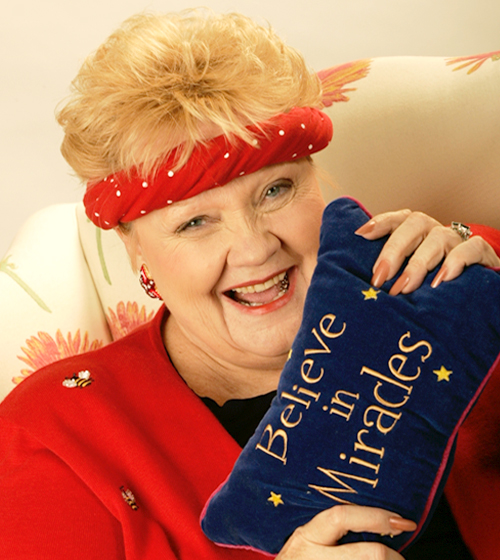
Jeanne and MaryAnn would put whale, apple, strawberry, lobster and other appliques on wrap-around skirts and T-shirts. About 70 or 80 women would sew from home and then sell product to Junior League shows in Chicago, and later, to boutiques.
“I remember when I was still in high school I’d be going around delivering fabric and threads, out to the farmers’ houses,” Tim said. “And stuffing quilts. I hated stuffing quilts. They did a great quilt business and I’d be ready to play ball with the guys. [Jeanne] would go, ‘No, you’ve got to go down in the basement and stuff eight quilts.’”
Just as The Silent Woman label’s wholesaling business was mushrooming, Jeanne’s “beloved Butchie” died of a heart attack in 1981 at age 43.
Soon thereafter, the business was found to have violated a Fair Labor Standards Act provision that banned commercial knitters from working at home.
JEANNE MOVES TO FL
A year or two later, Jeanne sold the family’s Griswold Street home and moved to Florida, where she opened a Silent Woman in a shopping plaza in Boca Raton.
After several false starts with manufacturing partners and the retirement of MaryAnn, Jeanne decided to go it alone.
She then set her sights on the Delray Beach flea market, where for two or three years she sold hand-painted clothing she’d made. Jeanne was always cutting fabric, Tim said, and then used glue-paint to stick on rather than sew her appliques.
“It was pretty lucrative,” he said. “She could make a good living but she was working her tail off.”
A fledgling actor living in New York at the time, Tim called his mom and said, “Hey, do you want to try it — you and me? Let’s start a business together.’”
Jeanne’s last line of clothing had been sold under the JB [Jeanne Bice] Duckworth label. “She was always into ducks,” Tim said. “I don’t know why. She had this thing about ducks. She thought they were cute.”
Jeanne sold her flea market products with a Quacker Factory label. “She had these iron-on labels made with Quacker Factory. They didn’t even have ducks on them. They had geese,” Tim said. “Geese don’t quack; they honk.”
Despite the geese, the label took off. The company got sales reps, attended markets and sold product to Dillard’s and Nordstrom department stores.
“But when we started out in Delray we … ended up making them the same way we made them at the Silent Woman,” Tim said. “We had at the height of our cottage industry down there I had 90 home sewers” from South Miami to Jupiter, Fla.
DISCOVERS QVC
Still, these were lean years. One morning, Jeanne noted that Boca Raton had gotten a new cable company. She asked Tim if he’d heard of QVC.
“Holy cow,” Tim said after watching it. “They’re selling a lot of stuff.”
“So I went back the next day and said, ‘Mom, I think we could do that,’” he said. But the company’s reps couldn’t get in to QVC.
Jeanne had Tim buy some tagboard and a Sharpee. They made a sign that read
QVC Yes!
At his mother’s request, he got on a ladder and hung the sign in their office.
Three weeks later the Florida state chamber of commerce called to see whether Jeanne wanted to audition for the show, which was scouring the country for entrepreneurs.
“I’m looking at the sign,” Tim said. “I’m looking at her. I’m on the phone with this guy. And I’m like, ‘What? You bet. Sign us up. We’ll be there.’”
The Bices were one of the last entrepreneurs to be seen that day. “We were picked,” Tim said. “That is how we got into QVC.”
Jeanne appeared on-air at Cyprus Gardens on Feb. 4, 1995. “That was a big day for us,” Tim said. “Although we sold out the two items before we even got off the air.”
QUALITY FAILURE
But Quacker Factory was still a cottage industry. QVC ordered 2,000 items from the company, which had been making 200 blouses a week.
“The quality failed miserably,” Tim said. “We had them all come back and we had to redo them all. It was a struggle. We didn’t have any money. I had to find people to give us money to buy the goods to put the stuff together. So we struggled for three to four years.”
But every Quacker Factory product on the air sold out. “And everyone loved Mom on TV. That was the magical part of it,” Tim said. “She could sell ice cubes to Eskimos.”
Two QVC employees introduced the Bices to a New York City woman representing a Hong Kong manufacturer.
“She started making clothes for us in China. And that’s when it all turned around,” Tim said. “We really started to grow.”
JEANNE IS FAMOUS
Jeanne became a celebrity.
“Every time we’re in airports or out for dinner, people are coming up,” Tim said.
To expand the brand, Jeanne wrote and Tim edited a book, “Pull Yourself Up By Your Bra Strap,” that was picked up by a New York publisher.
Book sales were 80,000 the first day on QVC, causing a New York Times magazine reporter to write, “Look out Oprah. This woman can sell more books than you.”
The Bices hired a publicist and Jeanne began appearing on “Good Morning America” and nationally syndicated talk shows.
And then, the head Quacker fell ill. Jeanne told Tim she was sick in February 2011. She died that June.
But the Quacker Factory label outlived its creator.
“This past year we had the largest growth in sales we’ve had since probably five years before Mom died,” Tim said. “We’re very proud that the brand that she conceived and put together and worked so hard at is still beloved and popular.”
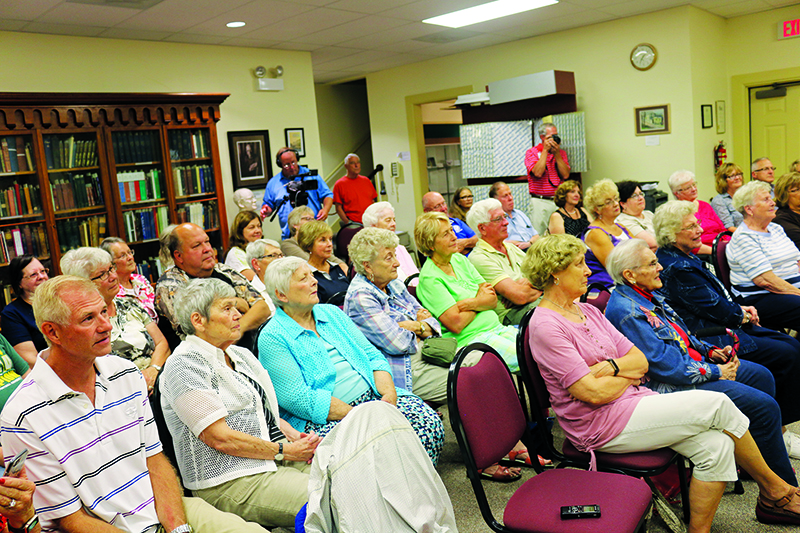
To stay up to date at what’s Quackin at the Quacker Factory, join the email list! Click here to sign up to receive emails from Quacker Factory.
To follow Patrick on Facebook, click here.
To follow Angel on Facebook, click here.


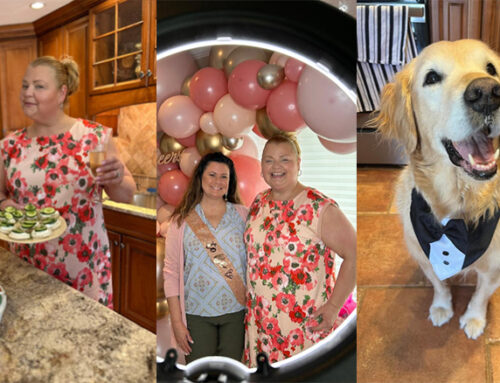
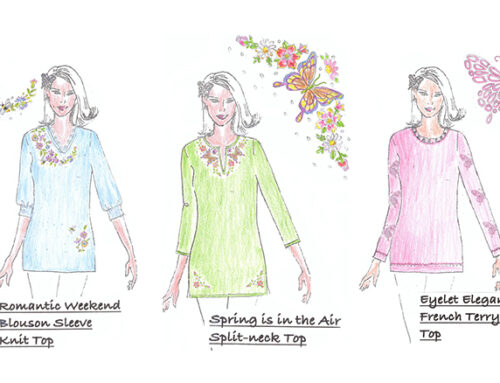
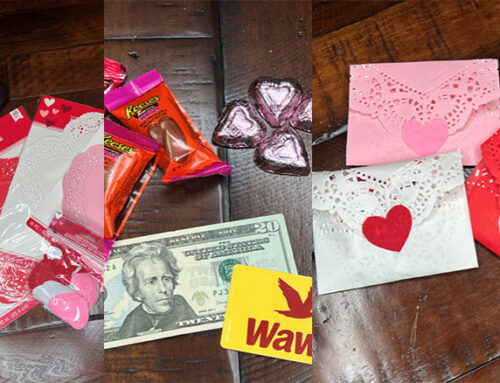
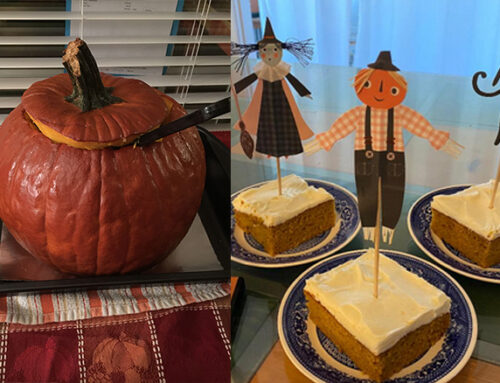

Loved Jeanne and her clothes. Good quality and spunky clothes!
I am a native Wisconsinite from Fond du Lac.We grow good stuff here. I just always loved watching Jeanne when she was on QVC. That gal had such a wonderful philosophy on life and I always learned something from listening to her while I was buy something Quacker Factory on the show. What a wonderful, big heart she had. I was greatly saddened when I heard she had died. There will never, ever be anyone like her and she has touched many lives of people she met. Heaven is blessed to have her now. Miss Jeanne and Angel does a great job.
I’m a Quacker!